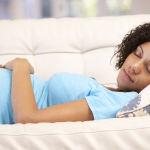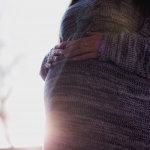The CDC recently analyzed data from the 2011 Behavioral Risk Factor Surveillance System (BRFSS) to determine the prevalence, frequency, and intensity of binge drinking among adult women. Data from the 2011 national Youth Risk Behavior Survey (YRBS) was used to assess current alcohol use and binge drinking among high school girls.
- 12.5% of adult women reported binge drinking.
- On average, binge drinkers reported 3.2 episodes per month, 5.7 drinks per episode.
- Binge drinking was most prevalent among women aged 18–24 years (24.2%) and 25–34 years (19.9%).
- Among high school girls, the prevalence of current alcohol use was 37.9%; the prevalence of binge drinking was 19.8%.
- Binge drinking was most common among those from households with annual incomes of greater than or equal to $75,000 (16.0%).
Although binge drinking is more common among men, the high prevalence of binge drinking among women of reproductive age is concerning. Binge drinking increases the risk for unintended pregnancy, and because women with unintended pregnancies are more likely to recognize the pregnancy at a later date, they are more likely to have fetal exposure to alcohol.
Based on self-reports from the BRFSS, focusing on women between 18 and 44 years of age:
- 51.5% of non-pregnant women used alcohol in the past 30 days, compared to 7.6% of pregnant women.
- The prevalence of binge drinking was 15.0% among non-pregnant women and 1.4% among pregnant women.
- Among pregnant and non-pregnant binge drinkers, the average frequency and intensity of binge episodes were similar, approximately 3 times per month and 6 drinks per episode.
Alcohol use during pregnancy can lead to fetal alcohol spectrum disorders (FASDs), which include fetal alcohol syndrome, alcohol-related birth defects, and alcohol-related neurodevelopmental disorder. It is estimated that FASDs affect at least 1% of all births in theUnited States. While any pattern of alcohol consumption carries risks, binge drinking appears to be particularly risky. FASDs have been associated with patterns of alcohol consumption that produce high blood alcohol concentrations, such as binge drinking.
For more information about binge drinking, visit the CDC’s Alcohol and Public Health web site. The CDC also has a site specifically addressing the use of alcohol during pregnancy.
Ruta Nonacs, MD PhD
Kanny D, Liu Y, Brewer RD, et al. Vital Signs: Binge Drinking Among Women and High School Girls — United States, 2011.Morbidity & Mortality Weekly Report. 2013;62(1):9-13.
Marchetta CM, Denny CH, Floyd RF, et al. Alcohol Use and Binge Drinking Among Women of Childbearing Age — United States, 2006–2010.Morbidity & Mortality Weekly Report. 2012; 61(28);534-538.








Leave A Comment